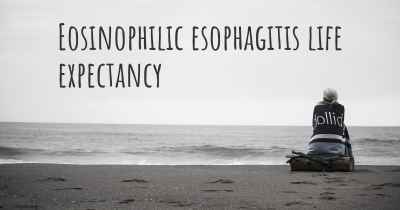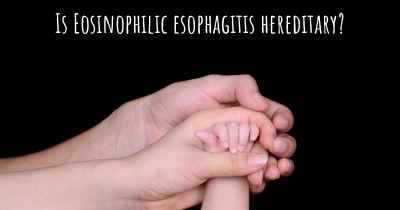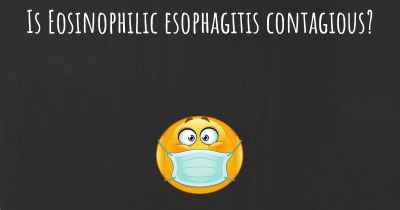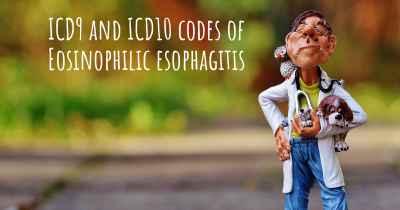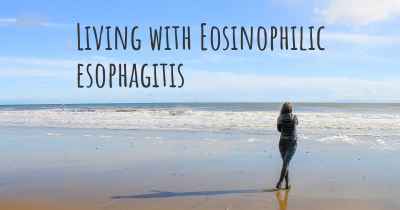Which are the causes of Eosinophilic esophagitis?
See some of the causes of Eosinophilic esophagitis according to people who have experience in Eosinophilic esophagitis
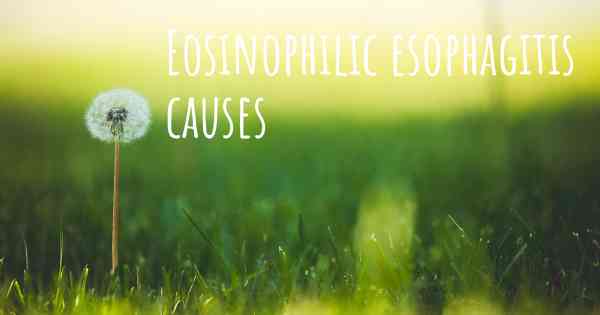
Causes of Eosinophilic Esophagitis
Eosinophilic esophagitis (EoE) is a chronic immune-mediated disorder that affects the esophagus, the tube connecting the mouth to the stomach. It is characterized by the presence of a high number of eosinophils, a type of white blood cell, in the esophageal tissue. While the exact cause of EoE is not fully understood, several factors have been identified as potential contributors to the development of this condition.
1. Allergic Reactions
Allergic reactions are believed to play a significant role in the development of EoE. It is thought that certain foods or environmental allergens trigger an immune response in susceptible individuals, leading to the accumulation of eosinophils in the esophagus. Common food allergens associated with EoE include milk, eggs, wheat, soy, and peanuts. Environmental allergens such as pollen, dust mites, and animal dander may also contribute to the development of EoE.
2. Genetic Factors
Genetic factors are thought to contribute to the development of EoE. Studies have shown that certain gene variations are more common in individuals with EoE compared to the general population. These genetic variations may affect the immune system's response to allergens and contribute to the development of EoE. However, more research is needed to fully understand the genetic factors involved in this condition.
3. Environmental Factors
Environmental factors such as exposure to certain chemicals or pollutants may also play a role in the development of EoE. It is believed that these factors can trigger an immune response in susceptible individuals, leading to inflammation and the accumulation of eosinophils in the esophagus. However, the specific environmental triggers for EoE are still being investigated.
4. Dysregulation of the Immune System
Dysregulation of the immune system is another potential cause of EoE. In individuals with EoE, the immune system overreacts to certain allergens, leading to inflammation and the recruitment of eosinophils to the esophagus. This dysregulation of the immune system may be influenced by both genetic and environmental factors.
5. Gastroesophageal Reflux Disease (GERD)
Gastroesophageal reflux disease (GERD), a condition characterized by the backward flow of stomach acid into the esophagus, has been associated with EoE. It is believed that the chronic inflammation caused by GERD may contribute to the development of EoE in some individuals. However, not all individuals with EoE have GERD, and the relationship between the two conditions is complex and not fully understood.
In conclusion, the causes of Eosinophilic esophagitis are multifactorial, involving a combination of allergic reactions, genetic factors, environmental triggers, immune system dysregulation, and potentially the presence of GERD. Further research is needed to fully understand the underlying mechanisms and interactions between these factors in the development of EoE.
Posted Sep 29, 2020 by EOS Network (Eosinophilic Diseases Charity)
When the body wants to attack a substance, such as an allergy-triggering food or airborne allergen, eosinophils respond by moving into the area and releasing a variety of toxins. However, when the body produces too many eosinophils, they can cause chronic inflammation, resulting in tissue damage.
These rare diseases are diagnosed according to where the elevated levels of eosinophils are found:
Eosinophilic esophagitis (esophagus)
Eosinophilic gastritis (stomach)
Eosinophilic enteritis (small intestine)
Eosinophilic colitis (large intestine)
Hypereosinophilic syndrome (blood and any organ)
Eosinophilic Disorder can be divided into two types, Primary and Secondary. The Primary type is further subdivided into allergic and non-allergic forms. The allergic type occurs in association with food allergies, while the non-allergic form occurs when no obvious cause can be found to explain the high number of eosinophils in the digestive system. Because of this, the non-allergic form is thought to be evidence that the body is attacking itself and considered to be an autoimmune disorder.
Symptoms
Common symptoms may include pain, swelling, skin rash, hives can occur, reflux, choking, difficulty swallowing, nausea, vomiting, loss of appetite, stools containing blood and/or mucus, abdominal cramping, diarrhea, fever, esophageal rings, motility problems, bowel obstruction, bowel or stomach wall thickening (from scar tissue buildup), pseudopolyps, protein loss, anemia, malabsorption, developmental delay, bleeding, and several other symptoms that occur in individual cases. Many people also experience nutritional deficiencies and/or side effects from medications, such as neuropathy (nerve damage) or osteoporosis (decrease in bone mass).
Treatment Options
Special amino acid-based formula may be needed as a supplement for those whose diets are so limited that they are unable to obtain enough nutrition from food alone. Some primary forms may require the avoidance of all regular foods and complete reliance on an amino acid-based formula, which maybe consumed normally or pumped through a special feeding tube (naso-gastric, gastrostomy or jejunostomy tubes).
For the most severe flare-ups or for those who experience problems from all foods and formulas, feeding through a blood vessel (TPN) may be the only remaining option. Some cases also require additional symptom-specific help, such as pain medication. This disease may cause such severe bleeding or nutritional deficiency that they condition may be life threatening if not treated with appropriate medications.
Since there is no known cure for Eosinophilic Gastrointestinal Disorder, management of the condition is very important in order to prevent severe damage to the digestive system (and to the organs in the case of Hypereosinophilic syndrome) caused by the high numbers of eosinophils. Because symptoms vary so widely and may mimic other conditions, it is important that accurate information and awareness of Eosinophilic Gastrointestinal Disorder is achieved.
Posted Sep 13, 2017 by Scholeigh 1700
Posted Feb 28, 2017 by Luis 1665
